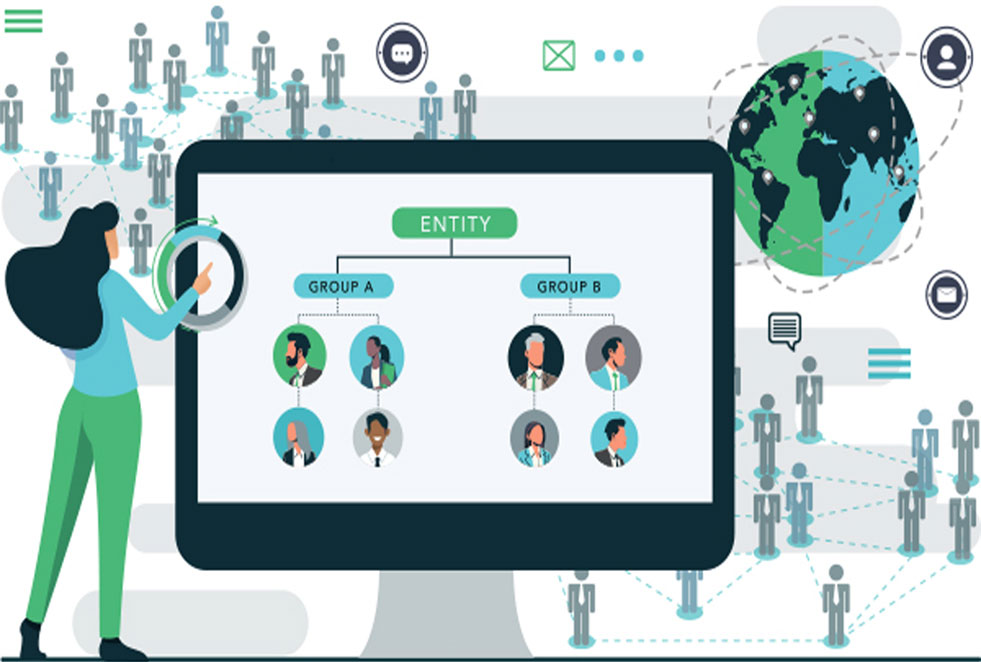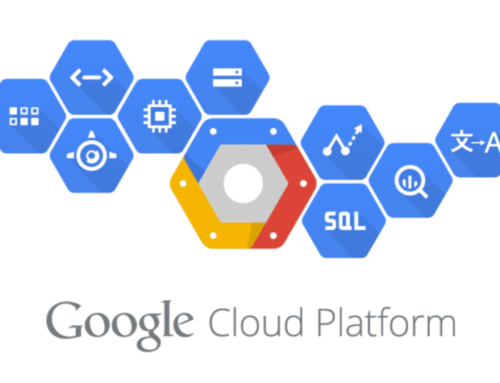Bulk User Management
Multiple user management, including activating and deactivating them, appears to be a challenging task. Deactivating the inactive users in order to preserve licensed users may appear to be a very laborious operation because one must first filter out the inactive users, then choose each user individually, and then deactivate them.
What is User Management?
The capacity for administrators to control user access to various IT resources, such as systems, devices, applications, storage systems, networks, SaaS services, and more, is referred to as user management. Any identity and access management (IAM) solution, in particular directory services tools, must include user management as a fundamental component. For any firm, controlling and managing user access to IT resources is a key security requirement. Administrators can manage users to restrict user access and on- and off-board users between IT resources. A directory service will thereafter, in accordance with the instructions given by the IT administrator, authenticate, authorize, and audit user access to IT resources.
Key characteristics include
- Integration with the front end (login area of the website) and flexible user rights.
- The ability to create a variety of users, including Administrators, Partners, Employees, Corporate Members, and Door Personnel.
- A complete list of all users with numerous sorting and exporting options.
- Access to a wide range of user fields, such as private remarks for the back office, internal contacts, photographs, and marketing-specific data like newsletter subscriptions.
- Administration of membership cards and their billing cycles.
- Create corporate accounts using “corporate”/temporary cards that must be returned by mail or post after being given in at the door.
Why Is User Management Necessary?
User management is an essential aspect of IT operations for organizations of all sizes. It encompasses the processes and tools used to create, manage, and secure user accounts, access permissions, and identities within an IT infrastructure. Effective user management plays a crucial role in maintaining data security, ensuring regulatory compliance, and enhancing user productivity.
Importance of User Management
In today’s digital landscape, where organizations rely on a vast array of IT systems and applications, user management has become increasingly critical. Here are some of the key reasons why user management is essential:
1. Data Security:
User management safeguards sensitive data by controlling who has access to what information. By implementing strong authentication mechanisms, granular access controls, and regular password changes, organizations can significantly reduce the risk of data breaches and unauthorized access.
2. Regulatory Compliance:
Many industries, such as healthcare, finance, and government, have strict regulations governing the handling of personal data. Effective user management helps organizations comply with these regulations by ensuring that only authorized personnel can access sensitive data.
3. Enhanced User Productivity:
Proper user management streamlines the user experience by providing easy access to necessary resources and simplifying password resets and other administrative tasks. This reduces downtime and frustration among users, allowing them to focus on their work.
4. Improved IT Efficiency:
Centralized user management systems automate many routine tasks, such as provisioning user accounts, assigning permissions, and managing access controls. This frees up IT staff to focus on more strategic initiatives and reduces the risk of human error.
5. Cost Reduction:
Effective user management can lead to significant cost savings by reducing the risk of data breaches, minimizing downtime, and optimizing IT resource allocation.
Essential Components of User Management
A comprehensive user management system typically includes the following components:
1. User Identity and Authentication:
The system should create and manage user identities, including usernames, passwords, and other identifying information. It should also implement strong authentication mechanisms, such as multi-factor authentication, to verify user identities.
2. Access Control and Authorization:
The system should define access permissions for users, determining who can access which resources and perform specific actions. It should also enforce these permissions to prevent unauthorized access.
3. User Provisioning and De-provisioning:
The system should automate the process of creating and removing user accounts, ensuring that access rights are updated when users join or leave the organization.
4. Auditing and Reporting:
The system should generate detailed logs of user activity, including access attempts, resource usage, and changes to user accounts. These logs provide valuable insights for security audits and incident investigations.
5. User Self-Service Portal:
The system should provide a user self-service portal where users can reset passwords, update profile information, and manage their access to resources. This reduces the burden on IT support and empowers users to manage their own accounts.
6. Integration with Security Tools:
The system should integrate with other security tools, such as SIEM systems and identity and access management (IAM) platforms, to provide a comprehensive view of user activity and security threats.
Benefits of Effective User Management
Organizations that implement effective user management can reap a multitude of benefits, including:
- Reduced risk of data breaches and unauthorized access
- Improved compliance with regulatory requirements
- Enhanced user productivity and satisfaction
- Increased IT efficiency and cost savings
- Strengthened overall security posture
Advantages of user management
Effective user management helps companies maintain user-based licensing compliance and enhances user-based license transparency. It allows organizations to make the most of user-based licenses, such as Office 365 or Adobe Creative Cloud, and reduce software license costs.
For example, by knowing how many devices a user has activated under their license, an organization can determine whether they need to purchase a new license when a user requests a copy of Office 365 for a mobile device in addition to their laptop, desktop, and phone.
User management can assist businesses in determining where they might spend money on software in the future as well as planning their software budgets. Budget holders can determine which areas (users) of the company will need specific licenses and when by using effective user management. In order to recycle or add the license to a “licensing pool,” the organization will be able to determine when users no longer need a particular piece of software.
- In terms of the procedure for new hires, movers, and departing employees, user management can assist organizations in being more proactive. Effective user management allows companies to minimize disruption for new users, internal movers, and leavers by ensuring that their devices and software are reclaimed by IT, freeing up precious ITAM asset.
What use does bulk user serve?
The term “bulk user” typically refers to a scenario where a large number of users are managed or processed simultaneously, especially in the context of software systems, online platforms, or IT administration. Understanding the uses and benefits of managing users in bulk is crucial in various contexts, including organizational management, software deployment, and system administration.
Efficient User Management
In organizational settings, especially those with a large number of employees, managing user accounts individually can be time-consuming and inefficient. Bulk user management allows administrators to handle multiple user accounts simultaneously, significantly reducing the time and effort required for tasks such as account creation, updates, or deletions.
Streamlined Onboarding and Offboarding
For onboarding new employees, bulk user management enables the quick and seamless creation of multiple accounts, ensuring that new team members have immediate access to necessary tools and resources. Similarly, when employees leave the organization, their accounts can be deactivated or deleted in bulk, enhancing security and efficiency.
Consistent Policy Implementation
Applying policies and permissions across a large user base is more manageable with bulk user management. Administrators can ensure uniformity in access rights, security settings, and other configurations, thereby maintaining consistency and compliance across the entire organization.
Rapid Response to Security Incidents
In the event of a security breach or vulnerability, the ability to rapidly modify access rights or reset passwords for a large number of users is crucial. Bulk user management allows for quick, organization-wide responses to such incidents, helping to mitigate risks and protect sensitive information.
Cost and Resource Optimization
Managing users in bulk can lead to significant cost savings and resource optimization. Automated bulk processes reduce the need for extensive manual work, allowing IT staff to focus on more strategic tasks rather than repetitive administrative activities.
Customization and Flexibility
Bulk user operations often come with a degree of customization, allowing organizations to tailor processes to their specific needs. This flexibility ensures that user management aligns with the unique operational structures and workflows of the organization.
Enhanced Data Management
In cases where user data needs to be updated or migrated, bulk user operations facilitate efficient data management. This is particularly important for organizations undergoing digital transformation or system upgrades.
Improved User Experience
From a user’s perspective, bulk user management can lead to a more streamlined and consistent experience. For example, batch processing of user accounts can ensure that all employees have access to the same tools and resources from the start, avoiding disparities and confusion.
Conclusion
In the dynamic world of digital operations, managing user accounts and access permissions can become a daunting task, especially for organizations with large user bases. Bulk user management emerges as a powerful solution to streamline this process, offering a range of benefits that enhance security, efficiency, and productivity.
Streamlined User Onboarding and Offboarding
Bulk user management simplifies the onboarding process by enabling the creation and provisioning of multiple user accounts simultaneously. This eliminates the need for manual entry, reducing the risk of errors and saving valuable time. Similarly, bulk user management facilitates efficient offboarding by allowing the deactivation or deletion of multiple accounts at once. This ensures that former employees no longer have access to sensitive data or systems.
Enhanced Security and Compliance
Bulk user management strengthens security by enabling the enforcement of consistent access policies across the entire user base. This helps prevent unauthorized access to sensitive data and resources, minimizing the risk of data breaches and compliance violations. Additionally, bulk user management tools often incorporate features for password resets, password policies, and access audits, further enhancing security posture.
Improved Efficiency and Productivity
By automating routine user management tasks, bulk user management frees up IT staff to focus on more strategic initiatives, such as cybersecurity, infrastructure maintenance, and technology innovation. This automation also reduces the risk of human error, ensuring that user accounts and access permissions are managed accurately and consistently.
Cost Reduction and Savings
Bulk user management can lead to significant cost savings by reducing the time and resources required for manual user management tasks. This can be particularly beneficial for organizations with large user bases or frequent changes to their workforce. Additionally, bulk user management tools often include features for optimizing resource usage and reducing administrative overhead, further contributing to cost savings.
Scalability and Flexibility
Bulk user management solutions are designed to scale with the growing needs of organizations, supporting the addition or removal of users as required. This scalability ensures that organizations can effectively manage their user bases as they grow and adapt to changing business needs. Additionally, bulk user management tools often offer flexible options for customizing access permissions and user groups, catering to the specific requirements of different departments and roles within an organization.
Empowering Users and Enhancing User Experience
Bulk user management can also empower users by providing them with self-service options for password resets, account updates, and access requests. This reduces the burden on IT support and allows users to manage their own accounts, enhancing their overall experience. Additionally, bulk user management tools often integrate with other IT systems, such as directories and single sign-on platforms, providing users with a seamless and efficient experience.
-
Requirements for User Management
User Management Requirements in the Era of Cloud and Decentralization
As organizations embrace cloud-based services and adopt new platforms, the traditional approach to identity and user management, which relied on a centralized user identity with access to all IT resources, is no longer adequate. To effectively manage users and their access to resources in this decentralized environment, organizations must consider the following requirements:
1. Cloud-Native Delivery:
Centralized user management systems must be cloud-native, enabling seamless deployment and management from the cloud. This ensures that users can access resources both on-premises and in the cloud without compromising functionality or security.
2. Multiprotocol Support:
Modern networks encompass a wide range of systems, each utilizing different protocols for authentication and authorization. To effectively manage users across this diverse landscape, centralized UM systems must support multiple protocols, including LDAP, SAML, SSH, RADIUS, and others.
3. Comprehensive Resource Integration:
Centralized UM systems should not only manage user identities but also integrate with various IT resources, including applications, databases, network devices, and cloud services. This holistic approach streamlines user provisioning, access control, and auditing across the entire IT infrastructure.
4. Scalability and Performance:
As organizations grow and user populations expand, centralized UM systems must be able to scale seamlessly to accommodate increasing demands. This includes handling large volumes of authentication requests, managing complex access policies, and providing real-time performance.
5. Granular Access Control:
Centralized UM systems should enable granular access control, allowing administrators to define precise permissions for individual users or groups. This granular approach ensures that users only have access to the resources they need to perform their job duties.
6. Robust Authentication and Authorization Mechanisms:
To protect sensitive data and prevent unauthorized access, centralized UM systems must implement strong authentication and authorization mechanisms. This includes multi-factor authentication, role-based access control, and attribute-based access control.
7. Automated User Provisioning and De-provisioning:
Centralized UM systems should automate user provisioning and de-provisioning, streamlining the process of adding and removing users from the system. This automation reduces manual effort and minimizes the risk of errors.
8. Comprehensive Auditing and Reporting:
Centralized UM systems should provide comprehensive auditing and reporting capabilities, enabling administrators to track user activity, monitor access patterns, and identify potential security risks. These insights are crucial for maintaining compliance and ensuring the integrity of the IT environment.
9. Integration with Security Information and Event Management (SIEM) Systems:
Centralized UM systems should integrate with SIEM systems, allowing for centralized security monitoring and incident response. This integration provides a unified view of user activity and security events, enabling faster detection and resolution of security threats.
10. User Self-Service Capabilities:
Centralized UM systems should provide user self-service capabilities, allowing users to manage their passwords, reset forgotten credentials, and update their profile information. This self-service approach reduces administrative overhead and improves user satisfaction.
We Provide a Variety of Services:
- Digital Marketing Services
- Brand Consultancy
- Website Design Services
- Web Hosting & Domain Registration in India
- Dynamic Website Development
- Website Redesign Service
- Website Maintenance Service
- AMC & IT Support
- Ecommerce Website Design Services
- SSL Certificate (HTTPS)
- Content Writing
- Complete Email Service
- G Suite Services
- Microsoft Office 365 Email Services
- Zoho Email Services
- ERP Bangalore
- Custom Web Application Development
- Mobile App Development and Services
- Android Application Development
- iOS Application Development
- Windows Application Development






